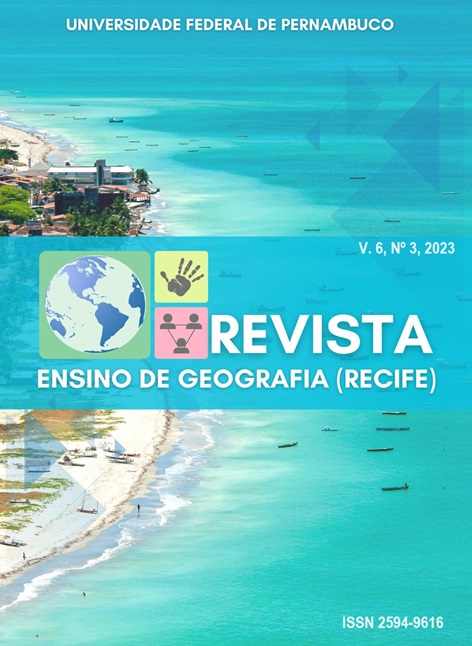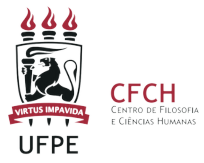Use of Comics in Physical (HQs) geography teaching
DOI:
https://doi.org/10.51359/2594-9616.2023.259046Keywords:
teaching, physical geography, geodiversity, comicsAbstract
Comic books (HQs) have an easy-to-understand language and elements that visually captivate the reader, especially the young audience, so that they can be used as a teaching tool. The proposal to use comics for teaching Physical Geography presents itself as a possibility of mixed language, where there is a predominance of visual resources that can be used for learning about the physical elements of nature. This is an extension project developed in the Degree in Geography course, Campus de Ananindeua, at the Federal University of Pará, with emphasis on presenting the Geological and Geomorphological Heritage of the landscapes of the Pará Amazon, raising knowledge about Geodiversity. The project is developed with the objective of transmitting in a practical and effective way some concepts about the Geodiversity of Pará with characters that were created from the song “No Meio do Pitiú”, composed and interpreted by the singer Dona Onete, which is full of characteristics of the local culture, in addition to briefly presenting the universe of comics and their applicability in school teaching in an easy, accessible and attractive way. The storytelling is done by animated characters from the daily life of Pará created and adapted to the language of comics. The characters take a trip through different landscapes of the Pará Amazon, presenting them and teaching about the physical-geographical characteristics, in addition to the socio-environmental importance. In this sense, comics are presented as an alternative and dynamic strategy, used to aid multidisciplinary teaching and learning of Geography.
References
BARBOSA, M. E. S. Docência e Geografia Escolar: espaço, tempo e possibilidades. 2014. 231 f. Tese (Doutorado em Educação Brasileira) Universidade Federal do Ceará, Fortaleza, 2014.
BRILHA, J.B.R. Patrimônio geológico e geoconservação: a conservação da natureza na sua vertente geológica. Braga: Palimage, 2005.
DANTAS M.E., ARNESTO R.C.G., SILVA C.R., SHINZATO E. 2015. Geodiversidade e análise da paisagem: uma abordagem teórico-metodológica. Terræ Didatica, 11(1):04-13.
EISNER, Will. Quadrinhos e Arte Sequencial. 2. ed. São Paulo: Martins Fontes, 1995.p.144-152.
GRAY, M. Geodiversity: valuing and conserving aciotic nature. Londres: John Wiley & Sons, Ltda. 2004.
GRAY, M. Geodiversity and Geoconservation: what, why, and how? Geodiversity & Geoconservation, p. 4-12, 2005.
KRAKHECKE, C. A. Representações da guerra fria nas histórias em quadrinhos Batman - cavaleiro das trevas e Watchmen (1979-1987). Porto Alegre. 2009.
MEIRA, S. A.; DE MORAIS, J. O. Os Conceitos de Geodiversidade, Patrimônio Geológico e Geoconservação: Abordagens sobre o papel da Geografia no estudo da temática. Boletim de Geografia, v. 34, n. 3, p. 129-147, 2 maio 2016.
MEIRA, S. A.; NASCIMENTO, M. A. L.; MEDEIROS, J. L.; SILVA, E. V. Aportes teóricos e práticos na valorização do geopatrimônio: estudo sobre o projeto Geoparque Seridó (RN). Caminhos de Geografia, v. 20, n. 71, p.384-403, 2019.
MELO, K. C. et al. Uma linguagem alternativa no ensino escolar: as histórias em quadrinhos na mediação do ensino e aprendizagem da geografia. Ateliê Geográfico, Goiânia, v. 7, n. 1, p. 260-283, abr. 2013.
MOURA-FÉ, M. M.; NASCIMENTO, R. L.; SOARES, L. N. Geoeducação: Princípios teóricos e bases legais. In: XVII SIMPÓSIO BRASILEIRO DE GEOGRAFIA FÍSICA APLICADA, 2017, Campinas. Anais. Campinas: Unicamp, 2017, p. 3054-3065.
OLIVEIRA, M. M. Geografia escolar: reflexões sobre o processo didático-pedagógico do ensino. Revista Discente Expressões Geográficas. Florianópolis – SC, n. 02, p. 10-24, jun./2006.
PASSOS, E. O.; TAKAHASHI, E. K. Recursos didáticos nas aulas de matemática nos anos iniciais: critérios que orientam a escolha e o uso por parte de professores. Rev. bras. Estud. pedagog., Brasília, v. 99, n. 251, p. 172-188, jan./abr. 2018.
ProGEO, 2011: Conserving our shared geoheritage – a protocol on geoconservation principles, sustainable site use, management, fieldwork, fossil and mineral collecting.10 p. 2011.
RAMA, Angela. Os quadrinhos no ensino de geografia. In: BARBOSA, Alexandre et al (Org.) Como Usar as Histórias em Quadrinhos na Sala de Aula. 2. ed. São Paulo: Contexto, 2005. p. 87-104.
RODRIGUES, S.C, PEDROSA, A.S. Análise da perda de Geodiversidade (Patrimônio Geomorfológico) em função da construção de barragens. In: RODRIGUES, S.C.; MERCANTE, M. A. (org). Avaliação sócio-ambiental do domínio dos cerrados e pantanal: métodos e técnicas. Uberlândia: UFU; Campo Grande: Anhanguera - Uniderp, 2013, p.7-22.
SILVA, E. I. A linguagem dos quadrinhos na mediação do ensino de Geografia: Charges e quadrinhos no usa da cidade. Universidade Federal de Goiás. Goiânia, 2010.
Downloads
Published
How to Cite
Issue
Section
License
Copyright (c) 2024 Luciana Martins Freire, Jamylle Pires Cook, Joselito Santiago de Lima

This work is licensed under a Creative Commons Attribution 4.0 International License.
Authors who publish with this journal agree to the following terms:- Authors retain copyright and grant the REVISTA ENSINO DE GEOGRAFIA (RECIFE) right of first publication with the work simultaneously licensed under a Creative Commons Attribution NonCommercial International 4.0 (CC BY-NC) that allows others to share the work with an acknowledgement of the work's authorship and initial publication in this journal.
- Authors are able to enter into separate, additional contractual arrangements for the non-exclusive distribution of the journal's published version of the work (e.g., post it to an institutional repository or publish it in a book), with an acknowledgement of its initial publication in this journal.
- Authors are permitted and encouraged to post their work online (e.g., in institutional repositories or on their website) prior to and during the submission process, as it can lead to productive exchanges, as well as earlier and greater citation of published work.



